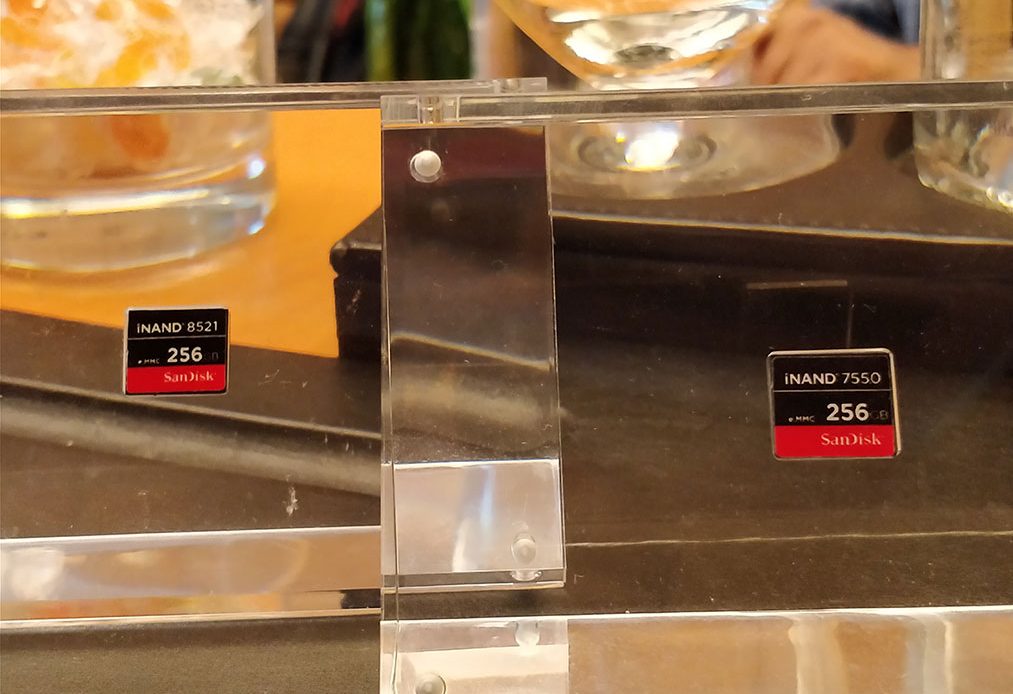Smartphones are developing in light speed and users are demanding better mobile experiences. They are consuming more applications than ever before and developers are fueling their appetite with newer advancements in virtual reality. augmented reality, advancements in photography, 4K media, 360-degree streaming video and much more. All these means increase in the volume, velocity, variety, and value of data. This puts a stress on the embedded flash memory and a need to cope up the memory technology to cater to the increasing demands. 3D Nand technology aims to ease things up and Western Digital has launched the latest generation of intelligent iNAND 8521 and iNAND 7550 embedded flash drives (EFDs) to smoother things.
What is 3D NAND technology?
Smartphones uses embedded flash memory to store and interact with the applications and user data. For many years, the technology used was 2D planar that stacked storage cells horizontally and was limited to “x” and “y” dimensions. Soon, the technology hit the road block of scaling limit and thus a need for a new technology which was filled by the 3D NAND technology that gave scope for extreme capacity, better performance and higher reliability when compared to 2D planar NAND. In 3D NAND technology, the cells are stacked vertically on top of each other in a layer sorts. This skyscrapper kind of technology gave path for larger storage densities within the same space or lesser than the previous 2D NAND technology. The better performance this new technology offered allowed for much better crunching of data and adopting at ease the new advancements and handling the big data that was thrown at it.
iNAND 8521 and iNAND 7550 embedded flash drives
At a media briefing held at Bangalore, Western Digital talked about their new iNAND 8521 and iNAND 7550 embedded flash drives and how it would help for better Smartphone experiences.
“By end of 2018, we estimate that average storage capacity will climb to over 60 gigabytes per smartphone globally to support the growing proportion of rich multimedia content and data-driven experiences from artificial intelligence to augmented reality on the devices,” said Neil Shah, research director of devices and ecosystems at Counterpoint Research. “This warrants a move to advanced 3D NAND embedded flash storage solutions, which will drive these richer experiences even further.”
Jackie Bao, Director of Product Marketing, Western Digital Corporation shared insights on the new technology and how iNAND 8521 EFD is designed for the big data / data smartphones. The iNAND 8521 uses the UFS 2.1 interface and WD’s latest fight-generation SmartSLC technology, this translates to doubling the sequential write speed
1, and up to 10 times the random write speed
2 pitted against the existing flagship smartphones powered with the present iNAND7232 EFD mobile solution. It also supports 5G and latest WiFi speeds and gives room for developers to take advantage of the high performance.
For mainstream Smartphones not to be left behind the flagship Smartphones while keeping the cost down, WD also have introduced next generation iNAND 7550 EFD. It is based on the e.MMC interface and offers sequential write performance of up 260 MB/s and random read/write performance of 20K IOPS and 15K IOPS respectively. This would help the next generation mid-range smartphones to increase the boot-up time and to quickly launch the applications.
Mr. Balaji Sivakumar, Director of Product Marketing – Western Digital Corporation stressed on the importance of India being one of the largest Smartphone market and the Western Digital’s commitment and acknowledgement of the Indian market and the continuous focus to engage both with Indian and global OEMs and bring an enhanced Smartphone experiences.
Apart from the flash memory, Western Digital has been actively bringing its various storage solutions to India and they recently launched
a new range of hard drives for higher recording densities and low costs per terabyte. ]]>


